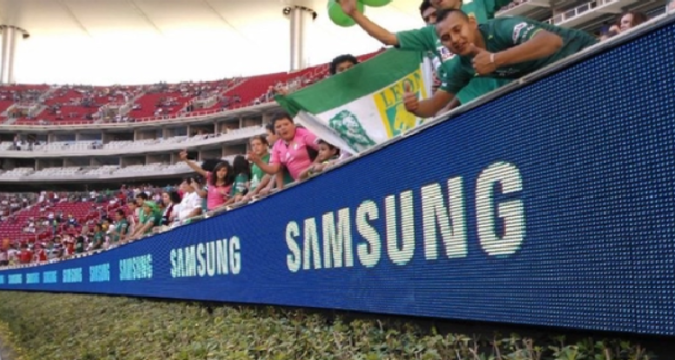
The English Premier League (EPL) has transformed into a global spectacle, capturing the attention of millions of fans around the world. This massive following has not only fueled the league’s growth but also attracted a plethora of sponsors eager to capitalize on its popularity. From humble beginnings as a simple emblem on a jersey to expansive advertising campaigns that cover billboards, digital platforms, and even entire stadiums, the evolution of sponsorship in the EPL reflects the league’s ascent as a financial powerhouse. This article explores the journey of sponsorship within the Premier League, highlighting key milestones and the implications for clubs, brands, and fans alike.
The Early Days of Sponsorship
Sponsorship in English football has roots that date back to the 1970s, but it was not until the formation of the Premier League in 1992 that the concept began to take shape in its modern form. Initially, sponsorship deals were limited in scope and visibility. Clubs would often partner with local businesses, and logos appeared modestly on team jerseys. The first official shirt sponsorship in the Premier League was established by Nottingham Forest, whose deal with the Japanese company Hitachi in 1982 set a precedent for what would become a transformative trend.
As the Premier League began to gain traction in the early 1990s, sponsorship opportunities expanded rapidly. The league’s global broadcasting rights skyrocketed, attracting attention from major brands looking to reach a broader audience. This surge in interest prompted clubs to explore more lucrative partnerships, paving the way for the multi-million-pound deals that characterize today’s sponsorship landscape.
The Rise of Shirt Sponsorship
The late 1990s and early 2000s witnessed a dramatic increase in shirt sponsorship deals, with clubs leveraging their growing visibility to attract high-profile sponsors. Notably, Manchester United’s partnership with the insurance company Aon, valued at around £80 million over four years, showcased the financial clout of clubs that consistently performed well on the pitch. Similarly, Arsenal’s deal with Fly Emirates, reportedly worth over £150 million, underscored the significance of sponsorship revenue for top clubs.
These deals changed the way fans interacted with their teams. The presence of recognizable brands on jerseys became a symbol of pride and loyalty, with supporters often wearing jerseys adorned with their team’s sponsor. However, this also sparked debates about commercialism in football, with some fans expressing concern that the essence of the sport was being overshadowed by corporate interests.
Expanding Beyond the Jersey
As the Premier League’s global profile grew, so did the scale of sponsorship opportunities. Clubs began to explore additional avenues for brand exposure, extending sponsorship beyond jerseys to include stadium naming rights, official partnerships, and digital advertising. The shift from simple logos on shirts to expansive advertising campaigns reflected the growing sophistication of sponsorship strategies.
Stadium naming rights became a significant revenue stream for clubs, allowing them to capitalize on their facilities. For instance, the Emirates Stadium and the Etihad Stadium became synonymous with their respective brands, further intertwining corporate identities with club heritage. This evolution not only provided financial support but also created an immersive experience for fans attending matches, as brands became an integral part of the matchday atmosphere.
The Digital Revolution
The rise of digital media has transformed how sponsorship is executed and measured in the Premier League. Social media platforms, streaming services, and online content have opened new avenues for brands to engage with fans. Sponsors can now create interactive campaigns that resonate with younger audiences, making use of digital storytelling to build deeper connections.
For example, brands can leverage match highlights, behind-the-scenes content, and fan engagement initiatives to promote their products. This shift has prompted clubs to invest in their digital marketing strategies, creating opportunities for sponsors to reach fans directly through targeted advertisements and promotions. The integration of technology into sponsorship agreements has led to a more dynamic relationship between clubs, sponsors, and supporters.
Challenges and Ethical Considerations
While the evolution of sponsorship has brought significant financial benefits, it has also posed challenges and ethical considerations. The heavy reliance on sponsorship revenue can create vulnerabilities, particularly for clubs that may struggle to maintain relationships with sponsors during economic downturns. The COVID-19 pandemic highlighted these risks, as many clubs faced renegotiations or cancellations of existing deals.
Additionally, ethical questions arise regarding the sources of sponsorship funding. Some clubs have faced criticism for aligning with brands that may not resonate positively with their fan base or reflect the values of the sport. This scrutiny has prompted discussions around the importance of ethical sponsorships and the need for clubs to be transparent about their partnerships.
Conclusion
The evolution of sponsorship in the English Premier League is a testament to the league’s growth and commercial success. From its early days with modest jersey logos to the expansive advertising campaigns that now encompass stadiums and digital platforms, sponsorship has become a critical component of the league’s financial model.
As the EPL continues to thrive and expand its global reach, the nature of sponsorship will likely evolve further, adapting to new trends and technologies. Clubs must navigate the challenges and opportunities presented by sponsorship while remaining mindful of their identity and values. For fans, the presence of sponsors adds a layer of complexity to the beautiful game, intertwining the passion for football with the realities of commercialism.
In this ever-changing landscape, one thing remains clear: sponsorship will continue to play a pivotal role in shaping the future of the English Premier League, ensuring its status as a leading force in the world of sports.